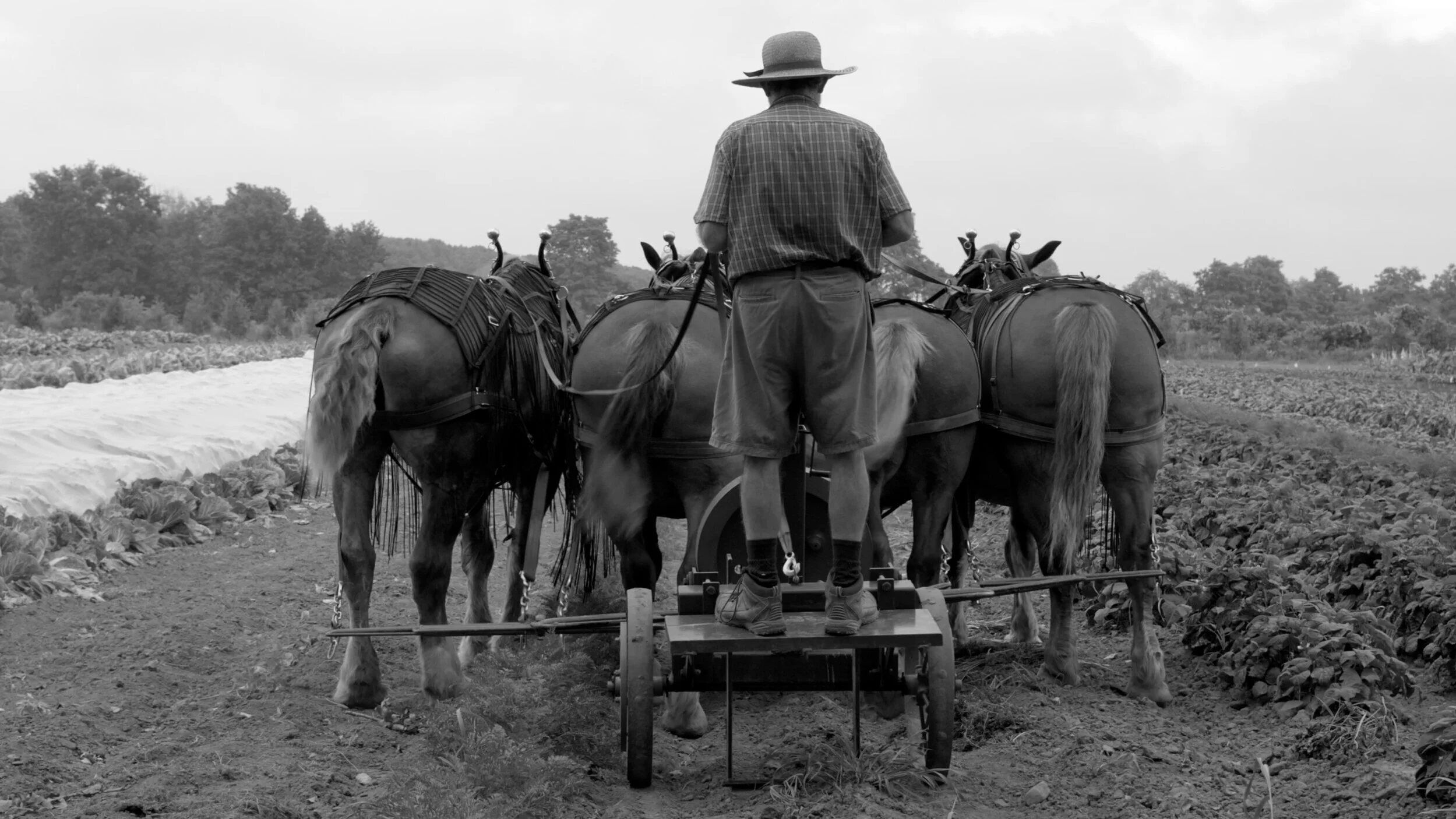Workhorse
A memorable triptych looking at three sets of working horses.
Documentary films about animals appear to be in vogue. Just recently we had Stray which was concerned with street dogs in Istanbul and to come are both Pariah Dogs set in India and Gunta which features pigs. In the meantime, here is Workhorse, a film from Canada by Cliff Caines, the title of which tells you most of what you need to know - but not quite all because it would have been helpful had we been informed in advance that this is a film in three parts. Although horses remain key throughout, the film's three sections are quite distinct and the first two of them are particularly impressive.
Workhorse has been shot by Ryan A. Randall in black and white 'Scope and its superb images make that choice a key element in the film's appeal. As though to bear witness to just how wonderful these pictures are, Caines has opted to play down talking heads and to concentrate instead on exterior images of outdoor work in which horses are involved. In the first piece that work is logging and it's done by Art Shannon who loves what he does and is deeply attached to his two animals. The wintry setting is marvellously captured by the camera and close-ups are a feature, especially in the shots of the horses. Art Shannon comments in voice over, but only in the closing moments of his episode does he speak direct to camera.
A similar approach is used when Caines moves on to detail life at Orchard Hill Farm owned by the Laings. The tone remains richly contemplative with the field horses screen centre. The care shown for the animals is fully conveyed and, as with the Shannon segment, there is a sense of an era coming to a close with retirement leading to change. In the case of the Laings, however, it is possible to think of passing on the land to the next generation, a theme which almost sidetracks the film for a short while since the stress on the farm as a whole takes the focus away from the horses.
There is a music score by Tom Third which is sensitively handled throughout, but the film's final part is somewhat different from what has preceded it. Naturally horses remain central and as with the Laings a particular family is featured - this time the Wessells. The hint of changing times is again present since it is pointed out that, despite the youthful Cody Wessell being a horse wrangler, the younger generation are in general less interested. What really gives a change of emphasis, however, is the fact that it is an event that provides the chief focus. The Wessells participate in a traditional fairground competition, one in which the horses entered vie with one another by pulling ever greater weights. In showing this occasion Caines may be capturing something that is dying out, but to my mind the material is less appealing than that which we have seen earlier. This is, nevertheless, a richly rewarding film. It may take its time but the artistry on view gains from that and only a final montage of posed heads all looking in the same direction feels too self-conscious although it does look back pleasingly on the film as a whole.
MANSEL STIMPSON
Featuring Art Shannon, Ken Laing, Cody Wessell.
Dir Cliff Caines, Pro Cliff Caines, Ph Ryan A. Randall, Ed Cliff Caines and Roland Schlimme, Music Tom Third.
Headline Films-True Story.
82 mins. Canada. 2019. Rel: 9 April 2021. Available on True Story. No Cert.


